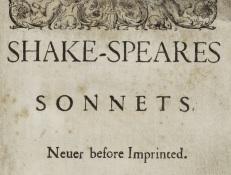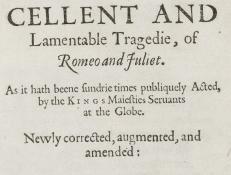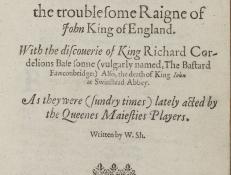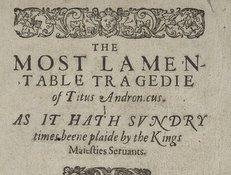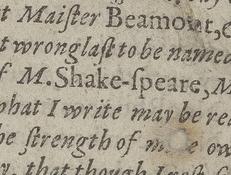To view a sortable list, please visit the Resource
All Documents
1609
At first glance, this copy of Shakespeare’s Sonnets, also published in 1609, might look just like the copy at the University of Manchester Library. However, there is a slight difference in the second-to-last line of the imprint.
1609
This is the second edition of Troilus and Cressida. This play was recorded twice in the Stationers’ Company register before it was ever printed.
1609
The publication rights for Romeo and Juliet were transferred twice in 1607, on January 22 from Cuthbert Burby to Nicholas Ling, and on November 19 from Ling to John Smethwicke.
1611
SHAKESPEARE DOCUMENTED IS STILL GROWING! Descriptive content and transcriptions will continue to be added, updated and expanded. Check back for regular updates!
1611
The third edition of Pericles was printed in 1611. It retains certain textual errors introduced in the second edition, indicating that the third edition was based on the previous one.
1611
The Troublesome Reign of King John was first published anonymously in 1591, but the second quarto of 1611 includes the attribution “Written by W.Sh.” In 1622, a third quarto expanded this to “W.
1611
This is the third edition of Titus Andronicus. On April 19, 1602 Thomas Millington transferred the right to publish the play to Thomas Pavier. However, the third edition was not printed until 1611, and lists Edward White, not Pavier, as the publisher.
undated, possibly 1611?
SHAKESPEARE DOCUMENTED IS STILL GROWING! Descriptive content and transcriptions will continue to be added, updated and expanded. Check back for regular updates!
1612
In An Apology for Actors, published in 1612, Thomas Heywood, a poet and playwright contemporary to Shakespeare, complains about William Jaggard’s The Passionate Pilgrim and appears to imply Shakespeare’s grievances as well.
1612
The playwright John Webster included Shakespeare in the list of dramatists he admired in his preface to The White Devil, printed in 1612 by Nicholas Okes for Thomas Archer.
Webster asserts his support of his contemporaries (image 3: A2v):

